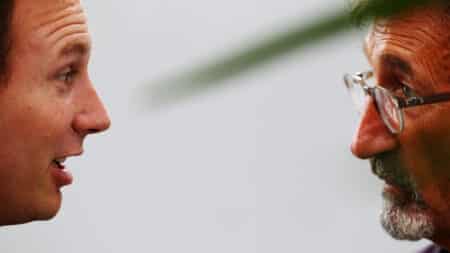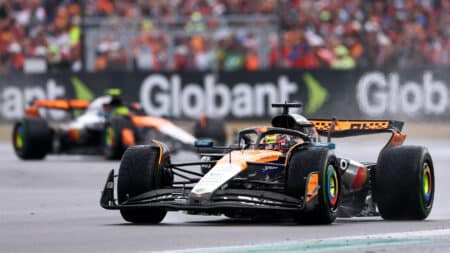
Horner's departure shows age of the maverick F1 boss is over
Christian Horner has now left Red Bull, the last of a certain breed of F1 team principal
Last week Ferrari provided details of its limited-edition mega machine and amidst the inevitable hoopla, I think one rather significant point was missed.
More on that in a minute because first let us consider for a moment the proposition on offer. First the name: the new car is called the F12 tdf for reasons readers of this column will likely understand already. But it’s interesting to me that despite endless opportunities over the last 60 years, Ferrari has waited until now to use even in acronym form, the Tour de France name again. Ferrari has not been in the least shy about pressing the GTO, Testarossa, Mondial and California names back into service when needed, applying them to cars that, to varying degrees, have not quite lived up to the reputations of the vaunted predecessors.
What chance, then, for the tdf? For me the original Tour de France is a top-three Ferrari. I think it even more beautiful (if less capable) than the short-wheelbase 250 that effectively replaced it. I recall sitting on a bank at Goodwood a few weeks back realising that the only positive aspect of retiring from the all-Ferrari Lavant Cup was watching Max Girardo hurl a Tour de France onto the podium. Its lines may not be quite as pure as GTO, but they have a sense of purpose and a presence even its most pulchritudinous descendants lack. It is one hell of an act to follow.
From the archive: Road test of the Ferrari F12 (2012)
To do it, Ferrari has asked one more favour of its 6.3-litre V12, namely to offer up 770bhp at 8900rpm. That’s extracting almost 123bhp from every litre of capacity, which is about what the Ford Cosworth DFV was managing when it first went in the back of a Lotus 49 in 1967. Today however, the engine is designed to last not a couple of hours, but the lifetime of the car.
The car is also over 100kg lighter than the standard F12 and kitted out in Ferrari’s latest carbon fibre, high-downforce clothing. Given that the standard F12 is the best front-engined Ferrari since the Daytona, it seems safe to speculate that the very small proportion of owners who will actually use their cars should be in for a treat. A shame then that there will be just 799 of them and, according to Ferrari, they’ve all been identified, been offered cars and, of course, had those offers gratefully accepted.
But here’s why I think the F12 tdf will likely stand out, even among the aching desirable limited-edition Ferraris issued to date. We know already that from now on all Ferrari V8 engines will be turbocharged and while those sampled already are exceptional examples of the art, they do not and will not mimic the high-rev histrionics of Ferrari’s finest normally aspirated motors because they cannot.
The V12s by contrast are not going to be turbocharged, they are instead going to have hybrid drive systems attached to them, following a trail already blazed by the LaFerrari hypercar. And while hybrids are terribly clever, their battery packs and electric motors are so heavy that even for a company like Ferrari, extracting sufficient horsepower to offset their extra weight is possible but a struggle, at least at the moment. So it seems likely that whatever car replaces the F12 will be both larger and heavier, even though it will doubtless be quicker.
So what you may be looking at is the final Ferrari to follow the format of the first: a pure sports car unencumbered by turbos, electric motors or rear seats, with a V12 engine at one end and driven wheels at the other. If so and however wondrous its replacement, the F12 tdf may come to be regarded as not only one of the most desirable Ferrari road cars of all time, but one of the most significant too.

Christian Horner has now left Red Bull, the last of a certain breed of F1 team principal

Was Oscar Piastri the real winner in the long run after Silverstone? asks James Elson

Lewis Hamilton hadn't won in almost three years – and then produced a sensational victory at Silverstone 2024. James Elson explains why it was his best ever

Describing this year's championship race as a 'battle' might be slightly over-egging it, writes James Elson